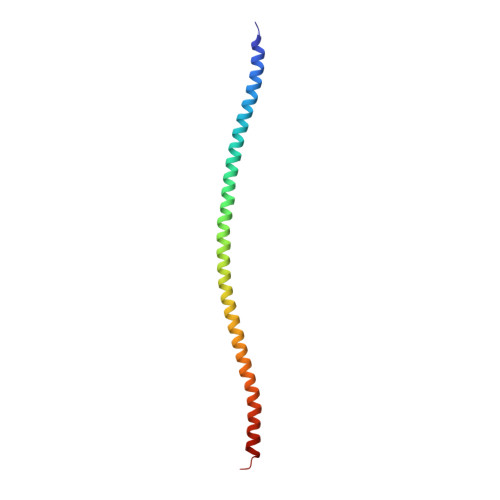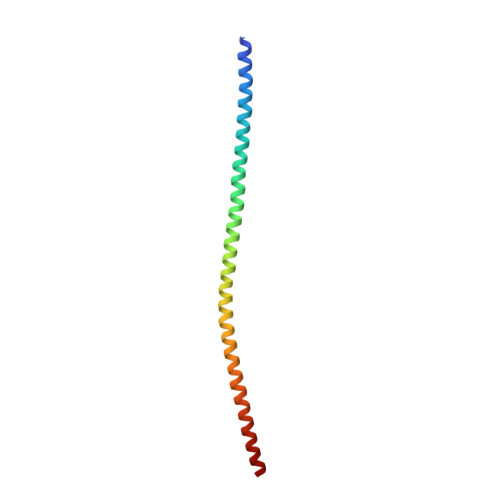Human keratin 1/10-1B tetramer structures reveal a knob-pocket mechanism in intermediate filament assembly.
Eldirany, S.A., Ho, M., Hinbest, A.J., Lomakin, I.B., Bunick, C.G.(2019) EMBO J 38
- PubMed: 31036554
- DOI: https://doi.org/10.15252/embj.2018100741
- Primary Citation of Related Structures:
6E2J, 6EC0 - PubMed Abstract:
To characterize keratin intermediate filament assembly mechanisms at atomic resolution, we determined the crystal structure of wild-type human keratin-1/keratin-10 helix 1B heterotetramer at 3.0 Å resolution. It revealed biochemical determinants for the A 11 mode of axial alignment in keratin filaments. Four regions on a hydrophobic face of the K1/K10-1B heterodimer dictated tetramer assembly: the N-terminal hydrophobic pocket (defined by L227 K1 , Y230 K1 , F231 K1 , and F234 K1 ), the K10 hydrophobic stripe, K1 interaction residues, and the C-terminal anchoring knob (formed by F314 K1 and L318 K1 ). Mutation of both knob residues to alanine disrupted keratin 1B tetramer and full-length filament assembly. Individual knob residue mutant F314A K1 , but not L318A K1 , abolished 1B tetramer formation. The K1-1B knob/pocket mechanism is conserved across keratins and many non-keratin intermediate filaments. To demonstrate how pathogenic mutations cause skin disease by altering filament assembly, we additionally determined the 2.39 Å structure of K1/10-1B containing a S233L K1 mutation linked to epidermolytic palmoplantar keratoderma. Light scattering and circular dichroism measurements demonstrated enhanced aggregation of K1 S233L /K10-1B in solution without affecting secondary structure. The K1 S233L /K10-1B octamer structure revealed S233L K1 causes aberrant hydrophobic interactions between 1B tetramers.
- Department of Dermatology, Yale University, New Haven, CT, USA.
Organizational Affiliation:




















